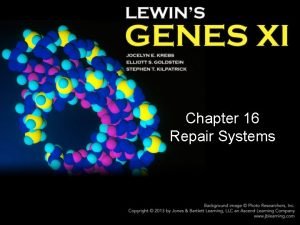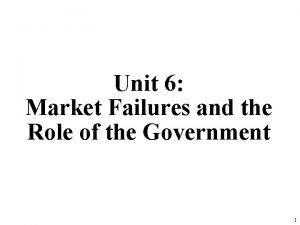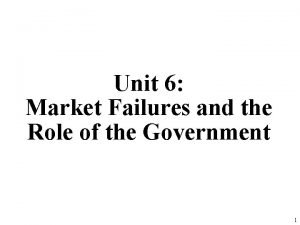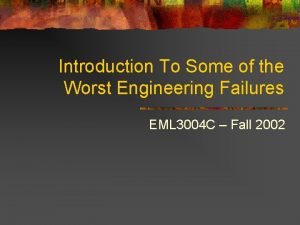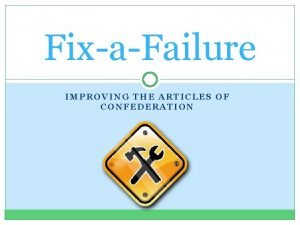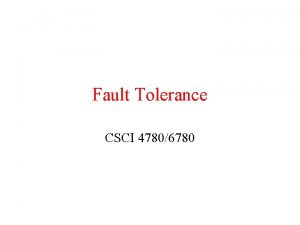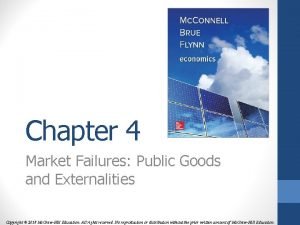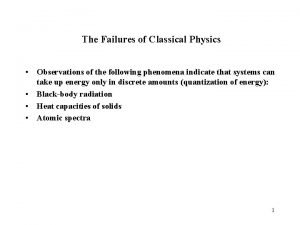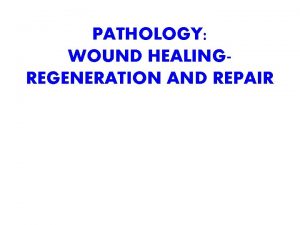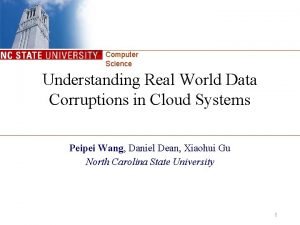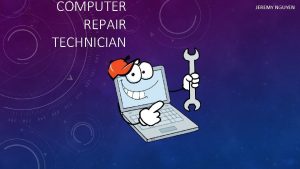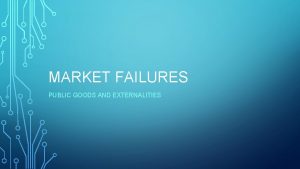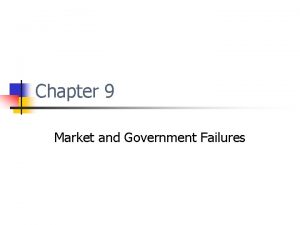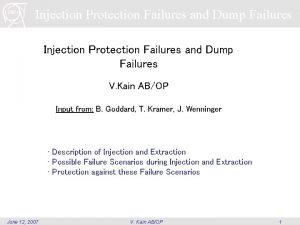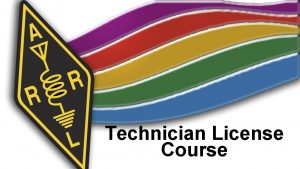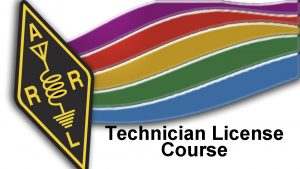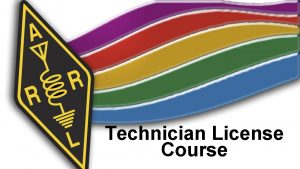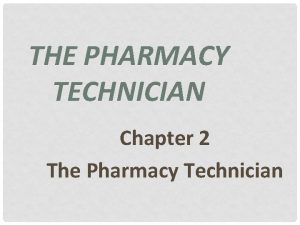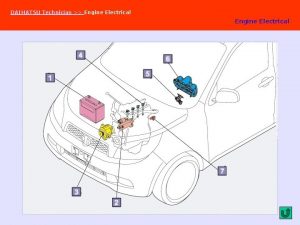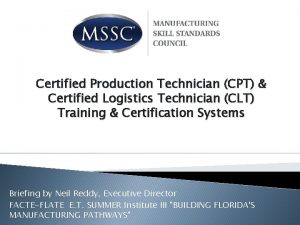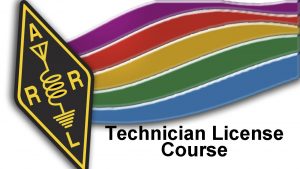Computer Technician Computer Software Failures Corruptions Repair and























- Slides: 23

Computer Technician Computer Software: Failures, Corruptions, Repair, and the Future of Computing

Copyright © Texas Education Agency, 2017. These Materials are copyrighted © and trademarked ™ as the property of the Texas Education Agency (TEA) and may not be reproduced without the express written permission of TEA, except under the following conditions: 1) Texas public school districts, charter schools, and Education Service Centers may reproduce and use copies of the Materials and Related Materials for the districts’ and schools’ educational use without obtaining permission from TEA. 2) Residents of the state of Texas may reproduce and use copies of the Materials and Related Materials for individual personal use only, without obtaining written permission of TEA. 3) Any portion reproduced must be reproduced in its entirety and remain unedited, unaltered and unchanged in any way. 4) No monetary charge can be made for the reproduced materials or any document containing them; however, a reasonable charge to cover only the cost of reproduction and distribution may be charged. Private entities or persons located in Texas that are not Texas public school districts, Texas Education Service Centers, or Texas charter schools or any entity, whether public or private, educational or non-educational, located outside the state of Texas MUST obtain written approval from TEA and will be required to enter into a license agreement that may involve the payment of a licensing fee or a royalty. For information contact: Office of Copyrights, Trademarks, License Agreements, and Royalties, Texas Education Agency, 1701 N. Congress Ave. , Austin, TX 78701 -1494; phone 512 -463 -7004; email: copyrights@tea. state. tx. us. Copyright © Texas Education Agency, 2017. All rights reserved. 2

Course Objectives > Define computer software failures, corruptions, and repairs > Identify and repair basic software failures > Understand the future direction of computing in the modern world Copyright © Texas Education Agency, 2017. All rights reserved. 3

Computer Software: one or more programs and a collection of data that is stored on the computer for a purpose > There are many different types of software programs > Each piece of software serves a particular purpose in making the computer function Copyright © Texas Education Agency, 2017. All rights reserved. 4

Computer Software Failure: a crash or cessation of processing because of a logic error in a program > Identifiable by a software program becoming unresponsive or a popup on screen Copyright © Texas Education Agency, 2017. All rights reserved. 5

Computer Software Failure Causes > Program Files were corrupted at installation > Files are missing > Hardware failure > Hard drive is failing > Processor is overheating Copyright © Texas Education Agency, 2017. All rights reserved. 6

Computer Software Corruption: critical files or application data have been destroyed, altered, or deleted causing the application to be unable to function > The Operating System will not allow the user to boot the applications when critical files are missing to prevent damage to the computer’s hardware or other software applications Copyright © Texas Education Agency, 2017. All rights reserved. 7

Computer Software Corruption Potential causes > Damaged installation program that did not contain and install the full contents of the software program > The end user accidentally deletes files from the hard drive > Adware or Spyware on an infected computer intentionally alter or delete important application files or folders > Hardware failures Copyright © Texas Education Agency, 2017. All rights reserved. 8

Computer Software Repair Operating System Corruption: PC > Repair by performing the following steps • Insert the Operating System disk, reboot the computer, and look for press any key prompt • Press any key to get to the Setup • Press R to begin the Repair process • Select the Hard Drive with the arrow keys and press R • Files will begin to be checked and overwritten • Upon completion, the computer will prompt the user to set the computer up Copyright © Texas Education Agency, 2017. All rights reserved. 9

Computer Software Repair Operating System Corruption (Non-PC) > Repair by performing the following steps • Insert the Disk Utility CD into the computer • Select Open Disk Utility under Installer at the top of the screen • The HD window should allow you to select the computer’s Hard Drive on the left and then click the Repair Disk Permissions button • The computer will then scan and repair damaged files • Once completed, eject the disk and reboot Copyright © Texas Education Agency, 2017. All rights reserved. 10

Computer Software Repair PC Application Repair > Depending on the severity of the corrupted files, there are varying degrees to repairing software • Resetting the program’s to its defaults (rare) • Repairing the software (common) • Uninstalling and Reinstalling the software (less common) Copyright © Texas Education Agency, 2017. All rights reserved. 11

Computer Software Repair PC Application Repair > Resetting a program to its defaults is frequently accomplished by selecting the top menu and selecting the Options Menu > Repairing the Software • • Click Start, Control Panel, Programs and Features Select the Application you wish to repair and click Change Click Repair, then click Continue Upon completion, a computer restart may be necessary Copyright © Texas Education Agency, 2017. All rights reserved. 12

Computer Software Repair PC Application Repair > Resetting a program to its defaults is frequently accomplished by selecting the top menu and selecting the Options Menu > Repairing the Software • • Click Start, Control Panel, Programs and Features Select the Application you wish to repair and click Change Click Repair, then click Continue Upon completion, a computer restart may be necessary Copyright © Texas Education Agency, 2017. All rights reserved. 13

Computer Software Repair PC Application Repair > Uninstalling and Reinstalling the software • Click Start, Control Panel, Programs and Features • Select the Application, click Uninstall; then click Continue • Insert the installation disc back into the computer, and then reinstall the software Note: This step should be taken ONLY if the software repair failed to remedy the corruption Copyright © Texas Education Agency, 2017. All rights reserved. 14

Computer Software Repair Non-PC Application Repair > Resetting a program to its defaults is frequently accomplished by selecting the top menu and selecting the Preferences Menu > Because the operating system has a built-in feature, it is possible to open this utility and restore the computer or files to an earlier time • Select an earlier time to restore from and Click Restore (Note: An external drive is required for this) Copyright © Texas Education Agency, 2017. All rights reserved. 15

Computer Software Repair Non-PC Application Repair > Uninstalling and Reinstalling the software • • • Open the HD by double clicking Click the Applications Folder Click on the Application you wish to delete Drag the Application to the trash and empty the trash Reinstall the software by inserting the CD into the computer or redownloading the software Copyright © Texas Education Agency, 2017. All rights reserved. 16

Future of Computing Moore’s Law: coined in 1970, states that as a rule of thumb in hardware computing history, the number of transistors that can inexpensively be placed on an integrated circuit doubles every 18 -24 months > Translation: Computer performance doubles about every two years Copyright © Texas Education Agency, 2017. All rights reserved. 17

Future of Computing Moore’s Law – What makes this possible? > Transistor sizes (the tiny electrical pathways) shrink allowing for more transistors to fit in the same space as the previous generation’s chip > What effect does this have? • • The processor can run at faster speeds The processor uses less energy The processor runs cooler Allows for more chips to be added to the processor increasing the number of duties it can fulfill Copyright © Texas Education Agency, 2017. All rights reserved. 18

Future of Computing Quantum Computing: Applying the principles of quantum mechanics to computer technology, the concept could be made practical and result in computers of the future becoming markedly faster Copyright © Texas Education Agency, 2017. All rights reserved. 19

Future of Computing Photonics: the generation, emission, transmission, modulation, and signal processing of light > Currently this technology is used in printing, optical drives, remote controls, and audio > Future computers could see more reliance upon this technology in data transmission which is capable of much higher data speeds than current cables Copyright © Texas Education Agency, 2017. All rights reserved. 20

Future of Computing Nanotechnology: the study of manipulating matter at an atomic and molecular level > Often size deals with nanometers and ranges from 1 nm to 100 nm > Currently, transistors in many of today’s computers range from 22 to 40 nanometers > The lower the number, the smaller the size, less energy is used, and more densely a processor can be packaged for performance Copyright © Texas Education Agency, 2017. All rights reserved. 21

Independent / Group Work Group > Get into your groups > Pick one of the emerging technologies (quantum computing, photonics, or nanotechnology) and do some research online to explain and show explicit examples of your technology > Your findings must be backed up by two or more reliable sources > Once complete, your group will present your findings to the class > Take detailed notes on each group’s research as it is being presented Copyright © Texas Education Agency, 2017. All rights reserved. 22

Independent / Group Work Individual > Describe Moore's Law and pick one specific computer manufacturer to display in a chart and illustrate the last 12 years of its technology growth. Your chart should prove Moore’s Law. Included in the chart should be the CPU and transistor count, in addition to the percentage of growth from one year to the next. Copyright © Texas Education Agency, 2017. All rights reserved. 23
 Surface repair technician
Surface repair technician Depurination
Depurination Mismatch repair
Mismatch repair Unit 6 market failures and the role of the government
Unit 6 market failures and the role of the government Unit 6 market failures and the role of the government
Unit 6 market failures and the role of the government Joseph stalin main accomplishments
Joseph stalin main accomplishments Failures of the articles of confederation
Failures of the articles of confederation Engineering ethics failures
Engineering ethics failures Pitot static failures
Pitot static failures How did the articles of confederation fail
How did the articles of confederation fail Problems of the articles of confederation
Problems of the articles of confederation Rpc semantics in the presence of failures
Rpc semantics in the presence of failures Chapter 7 section 1 guided reading
Chapter 7 section 1 guided reading Vacuum system
Vacuum system Define market failure
Define market failure Supply side market failures occur when
Supply side market failures occur when Cloud security failures
Cloud security failures Genghis khan
Genghis khan Puffery advertising examples in india
Puffery advertising examples in india Fixing service failures
Fixing service failures Failures of classical physics
Failures of classical physics No more failures
No more failures Perfect competition examples pictures
Perfect competition examples pictures Market failures
Market failures


